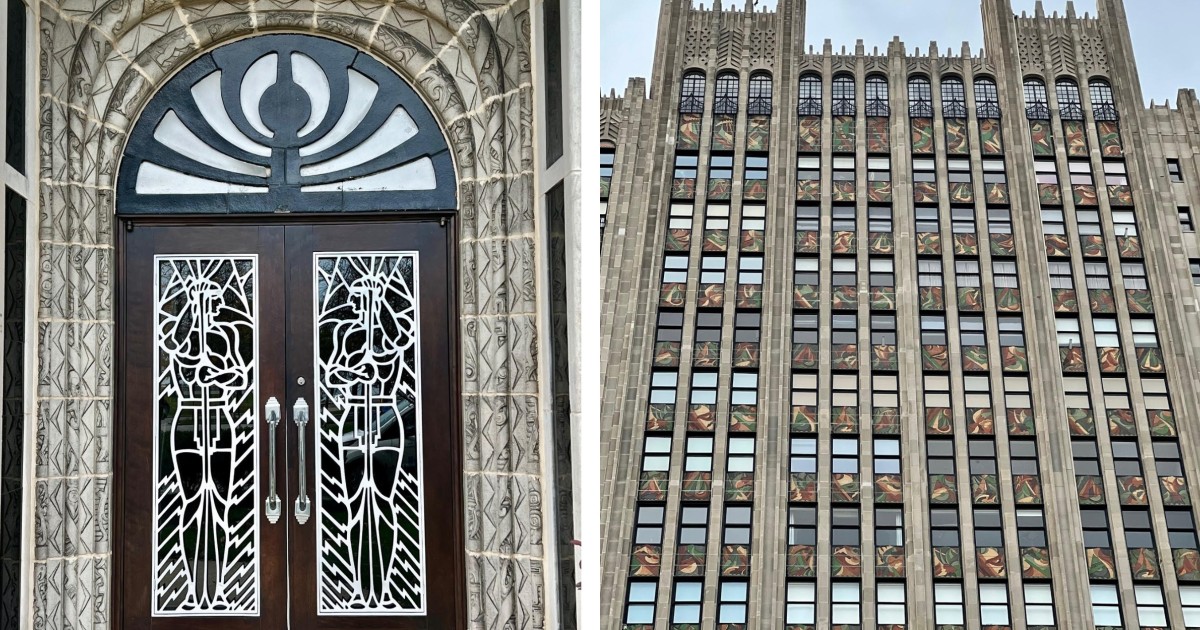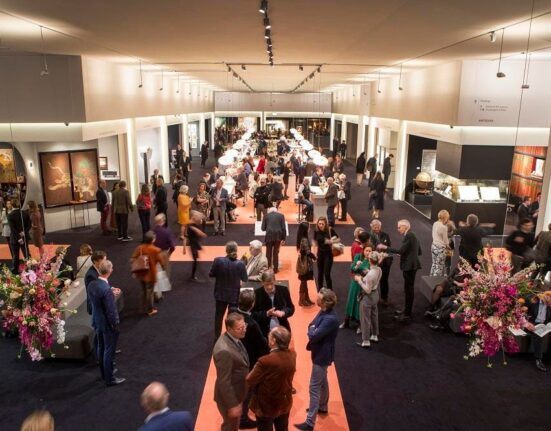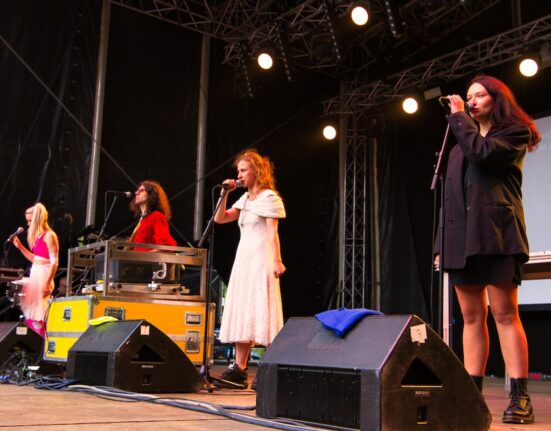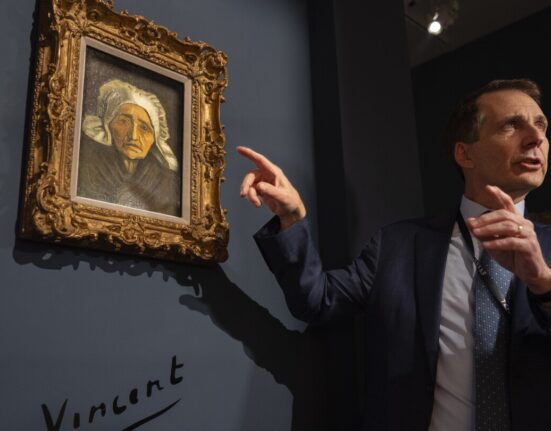Matthew Mateja, a retired CPS teacher, has been intrigued by a six-square-block section of Chicago since he was a North Side kid attending Whitney Young High School with classmates from the South Side.
In the time since, he’s gotten to know the area — between 48th and 51st streets, in the two blocks between DuSable Lake Shore Drive and the IC track embankment. The community is technically a mini-neighborhood within Kenwood.
“There are these beautiful pre-war apartment buildings, but with all these empty lots around them, Mateja said. “It makes me wonder what the neighborhood was supposed to be.”
The name “Indian Village” isn’t a formal designation, just a nickname, and it’s been fading from use in part because society has largely moved away from the term “Indian” as a term for people who were indigenous to the American continents. Nevertheless, the cluster of buildings where this nickname began has a very Chicago history.

In the early 1900s, most of the neighborhood was supposed to be lake bottom. The grand Chicago Beach Hotel stood at the southeast corner — where the Regents Park apartments, 5035 S. East End stands now — and sand collected around its piers and breakwaters. Eventually there were seven acres of new land. In the early 1920s, city parks officials planning the southern leg of DuSable Lake Shore Drive wanted to build east of the hotel, which would take away its beach, so a deal was made. The hotel traded its riparian rights for another nine acres of land. The hotel then announced in 1926 that it would slice up the land and sell it to developers who would build fancy high-rise apartments and coops.
The first completed building was the Barclay, a handsome limestone and red brick building at 4940 S. East End Ave. that was advertised in 1929 as “20 stories of sunshine in the new Chicago Beach section.” With no surrounding buildings, there must have been a lot of sunshine in those apartments.
Following close behind was the building that would give Indian Village its name.

The Powhatan is a fine Art Deco building. It’s familiar to anyone who’s traveled down The Drive and looked inland near 49th Street to see a 22-story building with multicolored panels up the sides in rows that alternate with concrete piers. Those who’ve gotten closer know the Native American-inspired ornamentation on the outside: metal grills on the front doors in the shape of tribal men, light fixtures that look like quivers filled with arrows and men in feathered headdresses rendered in metal plaques beneath the windows.
In the 1920s — and for decades later — this decorative scheme would have been seen as honoring or romanticizing Native people, and the landmark designation for the building explains the imagery as a way to create a more “American” building than architecture that references European designs. But in more recent times, the U.S. has grappled with the legacy of appropriating Native American characters in everything from the names of sports teams to Western movies and TV shows.
Looking at the Powhatan building with a modern context, it’s hard not to see the men in feathered headdresses as “mascots,” said Beth Redbird, an assistant professor of sociology at Northwestern University and faculty fellow with the Center for Native American and Indigenous Research.
Redbird says one clue the designs were more romanticization than elevation of the culture is that while the building is named for a leader of people on the East Coast, the characters carved on the building wear feathered headdresses that were used by Native people in the west.
“How can you say you’re honoring someone,” she asks, “when you’ve done absolutely no research on the people you’re talking about?”
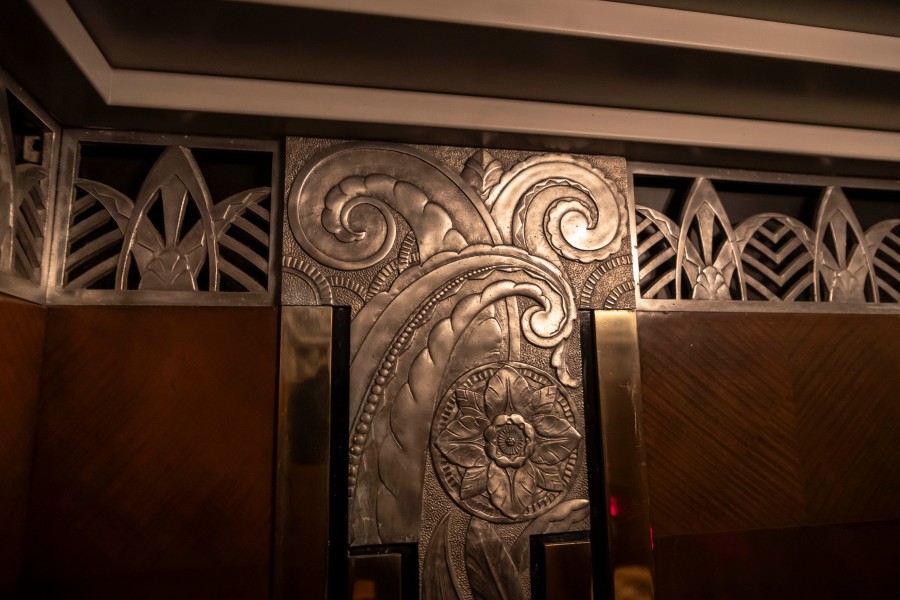
Not all the ornamentation at the Powhatan is Native-derived. The common spaces inside are extensively decorated, with everything from angular fans and fluted silver columns to steamships riding the waves and curled leaves of ferns. But it’s the building’s name that got imprinted on the blocks around it.
The building is named for Powhatan, who in the early 1600s was the leader of an empire that spanned about 200 miles of what’s now eastern Virginia, including the place where English colonists established Jamestown.
In the 1920s, Native Americans were often idealized for decorative uses. In Chicago, this included the Bowman and Spearman sculptures, towering figures atop horses at the Ida B. Wells Drive entrance to Grant Park, the giant busts of Native chiefs that originally crowned the Merchandise Mart, and Chief Naunongee and other Potawatomi (both dead and alive) on the corner towers of the DuSable Bridge over the Chicago River at Michigan Avenue.
Redbird said the 1920s fascination with Native American imagery came after several decades in the late 18th and early 19th centuries of aggressive eradication of Native Americans and their culture by the federal government.
“It’s a way of perpetuating the belief that these people are gone,” Redbird said, and Chicago would have been a place where the idea was prominent “because it was so close to the quote-unquote frontier” in the decades of eradication. “The long, bloody Indian wars wouldn’t have felt too far away.”
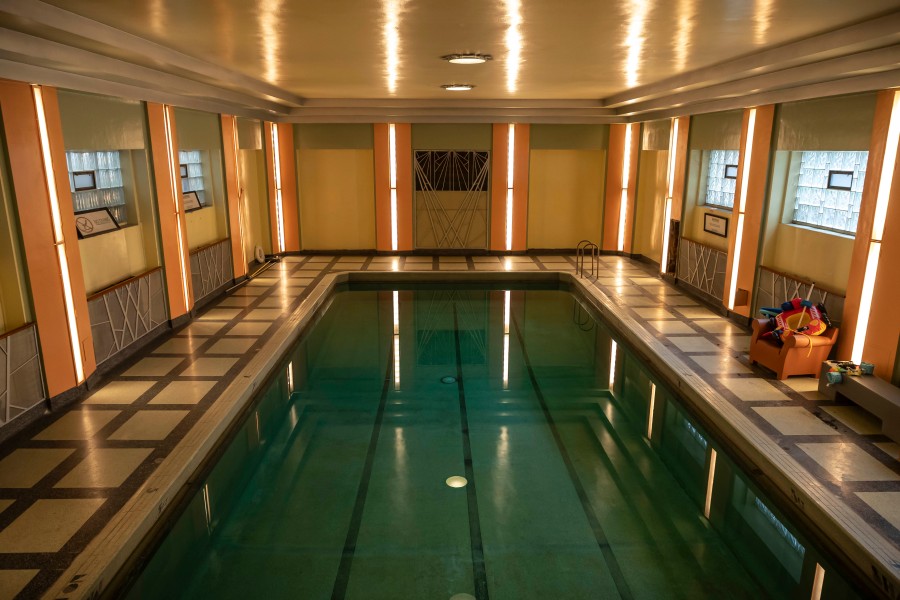
The reasoning behind naming the building after Powhatan is unclear, but the 1991 Chicago landmarking writeup of the building has a clue of sorts. The architect, Robert DeGolyer, and the designer of the ornamental theme, Charles Morgan, were “expressing modernist principles,” the document’s author, Timothy Barton wrote, “free of the derivative elements” of neo-historical architecture that drew inspiration from Europe. “The employment of American Indian imagery is an obvious reflection of an attempt to move toward a new ornamental vocabulary.”
The building also started in motion the informal name “Indian Village” for this little mini-neighborhood. Three more buildings went up in the area before the Depression halted development, and one of them also got a Native American name. That’s the Narragansett, next to the Powhatan, named for an Algonquian people in Rhode Island. The other two use their addresses as their names.
But after World War II, when building started again, developers kept going with the Native American names. In the early 1950s, six 14-story buildings by Mies van der Rohe went up in the blocks north of 50th Street and were dubbed the Algonquin Apartments.
A decade later, another 14-story building went up on East End Avenue called the Chippewa. All seven of these buildings are barely ornamented, modernist, minimalist and boxy. The only flourish is the rounded corners on the Chippewa.
These structures couldn’t be more visually different from the Powhatan, but all share a family of names that makes the nickname “Indian Village” obvious.
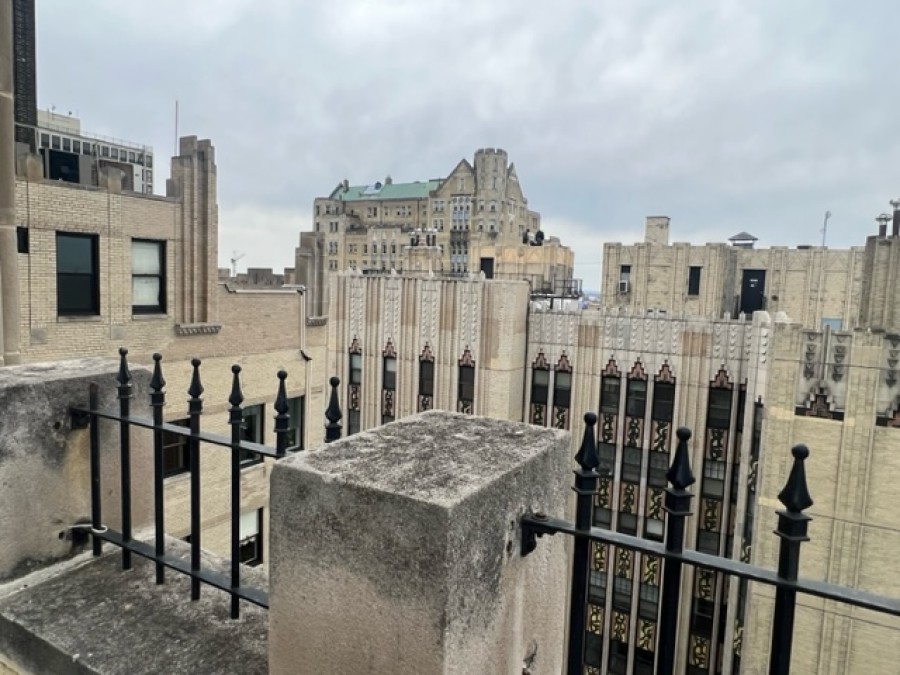
As Matthew Mateja pointed out, an unusually large proportion of the land on these blocks is surface parking lots. There’s nearly as much land taken up by parking as there is taken up by buildings. Since the Chippewa 60 years ago, no more towers have been built. Until the late 20th century, the share of unbuilt land was even bigger, but then rows of houses were built on Cornell Avenue and on Chicago Beach Drive.

The density in the area never quite reached the density the Chicago Beach Hotel’s owners must have envisioned when they carved up the land for apartment towers. There’s a visible marker of what was planned, which also runs up the north side of the Powhatan. There was going to be another tower right next door, so the Powhatan has no windows or ornamentation on that side — just a sheer brick wall that was supposed to disappear behind a neighbor.
Dennis Rodkin is the residential real estate reporter for Crain’s Chicago Business and Reset’s “What’s That Building?” contributor. Follow him @Dennis_Rodkin.
K’Von Jackson is the freelance photojournalist for Reset’s “What’s That Building?” Follow him @true_chicago.

